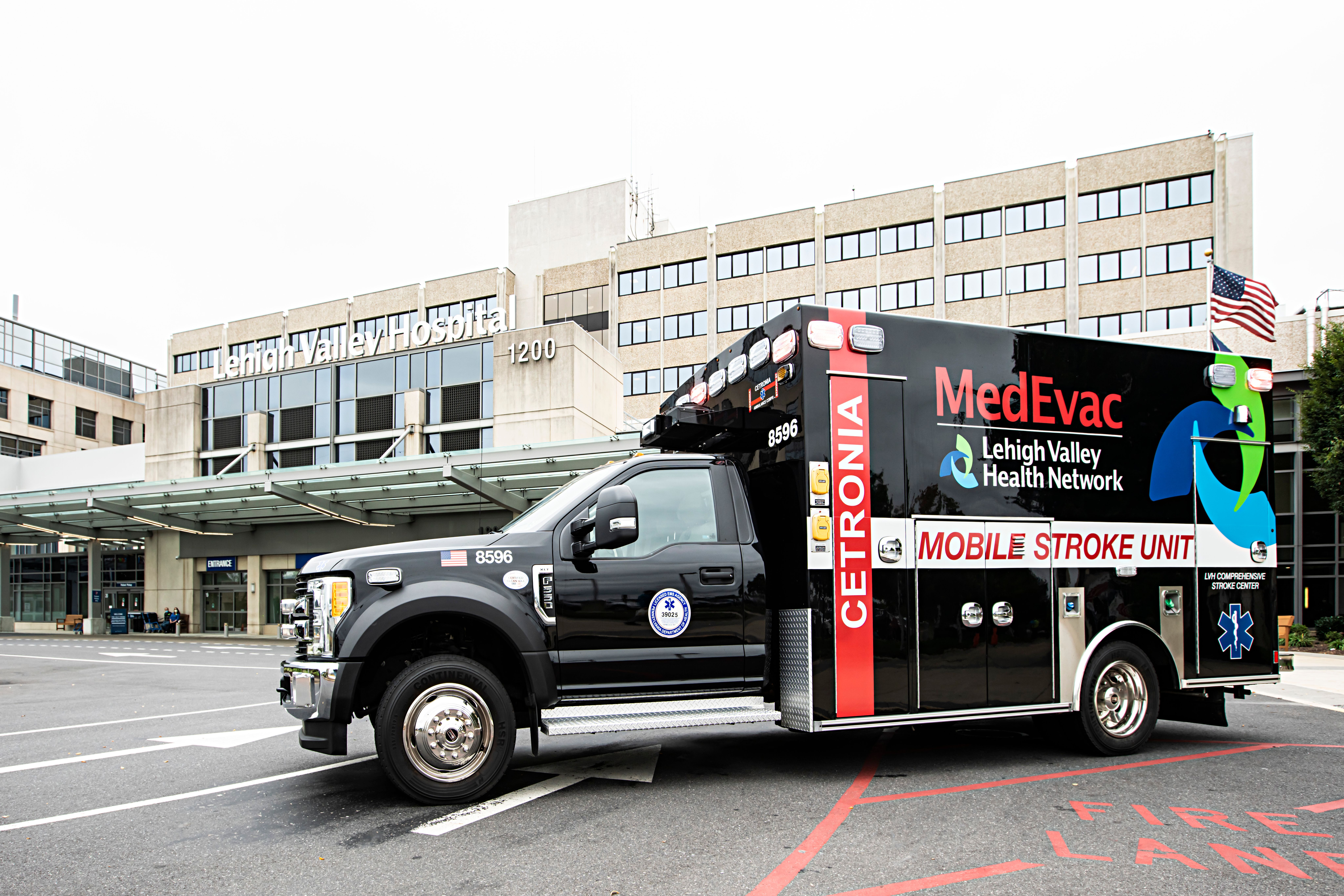Mobile Stroke Units Proving Their Worth But Limited by Reimbursement Issues
A pair of studies from ISC 21 is providing insight into the benefits of mobile stroke units while also highlighting current barriers to widespread implementation of these units.
®2021 Lehigh Valley Health Network

A pair of studies from International Stroke Conference (ISC) 2021 are highlighting the strengths and current limitations of mobile stroke units (MSU) in the United States.
A late-breaking presentation of the BEST-MSU trial outlined improvements in rate of tissue plasminogen activator (tPA) treatments and overall survival, but another analysis, which assessed survey data from MSUs nationwide, drew attention to the impact of reimbursement issues on the operation of these specialized units.
“If mobile stroke units cannot be reimbursed for the important care they provide, this vital service will be lost unless private donors are willing to continually step up to support these programs,” said Kenneth Reichenbach, MSN, FNPC, PHRN, program director of the Mobile Stroke Unit at Lehigh Valley Health Network and lead investigator of the analysis of survey data, in a statement. “We need overwhelming, united support for this to change within federal entities including the Centers for Medicare and Medicaid Services to explore appropriate pathways for Medicare reimbursement for the full range of advanced mobile stroke unit services.”
In the last decade, MSUs have gone from innovative concept to implementation in parts of the US and the world. The Benefits of Stroke Treatment Delivered Using a Mobile Stroke Unit (BEST-MSU) trial was designed to demonstrate the efficacy of these units and data from the study was presented by James Grotta, MD, of Memorial Hermann Texas Medical Center, during a late-breaking presentation at ISC 21.
Briefly, BEST-MSU randomized ischemic stroke patients to receive transport to the emergency department by an MSU or standard emergency medical services. Randomization was performed through parallel assignment and outcomes of interest for the study include utility-weighted modified Rankin Scale (uw-MRS) at 90 days, time from symptoms onset to tPA treatment, and mortality. Data related to 90-day outcomes of 1047 patients—617 treated via MSU and 430 treated via standard ambulance—were presented at ISC 21.
In the ISC 21 analysis, results suggested 97% of patients transported by MSU received tPA treatment compared to just 80% of those brought by a standard ambulance. Additionally, 33% of patients treated by a MSU received tPA treatment within an hour of symptom onset compared to just 3% of those transported by standard ambulance. The presentation also highlighted 53% of patients receiving treatment from an MSU experienced a full recovery compared to 43% of those treated in a standard ambulance.
“Our study confirmed that patients who are treated early benefit from a complete reversal of stroke symptoms and avoidance of disability. This suggests that in the first hour after a stroke occurs, the brain is not yet irreversibly damaged and is very amenable to effective treatment,” said study lead investigator James Grotta, MD, director of stroke research at the Clinical Institute for Research and Innovation at Memorial Hermann—Texas Medical Center, in a statement.
In the study led by Reichenbach, investigators sought to assess the financial status of MSU programs through analysis of blinded surveys sent to all MSUs in the US. Of the 20 currently operating MSUs, 19 returned survey responses.
Programs reported working a median of 30 days per month and servings median 240 square mile radius. The median number of dispatches for responding MSUs was 600 and the average tPA treatments administered per year was 72±78. The median staff size for these units was 4, with 37% including an MD and 16% including an advanced practice provider while the remaining used telemedicine MD coverage.
When assessing survey responses related to financial status, 18 reported a negative financial status and 1 reported a positive financial status. Investigators pointed out the single MSU reporting a positive financial status was classified as an outpatient clinic and not an ambulance. Investigators also found all MSUs depended partly on funding from personal gifts, grants, or institutional support because of billing restrictions from health care insurers.
“Although mobile stroke units are costly to equip and staff, they reduce the time to treatment. We also expect that more treatment via mobile stroke units can reduce the need for downstream utilization of long-term care,” added Grotta, when speaking about the BEST-MSU study, in the aforementioned statement.
These studies, “Reimbursement of Mobile Stroke Units in the United States: A Survey by the Prehospital Stroke Treatment Organization (PRESTO),” and “Benefits Of Stroke Treatment Delivered By A Mobile Stroke Unit Compared To Standard Management By Emergency Medical Services (BEST-MSU Study),” were presented at the American Stroke Association’s ISC 21.